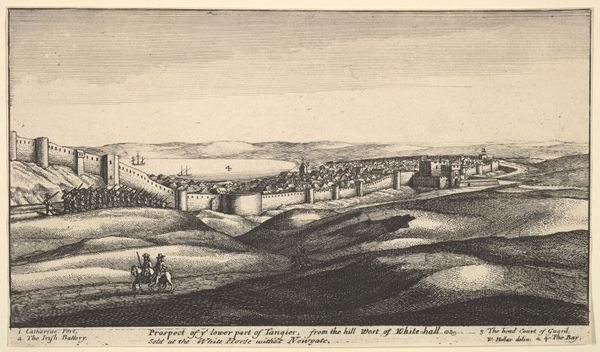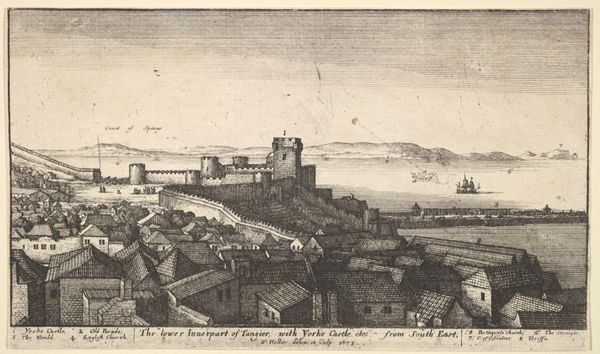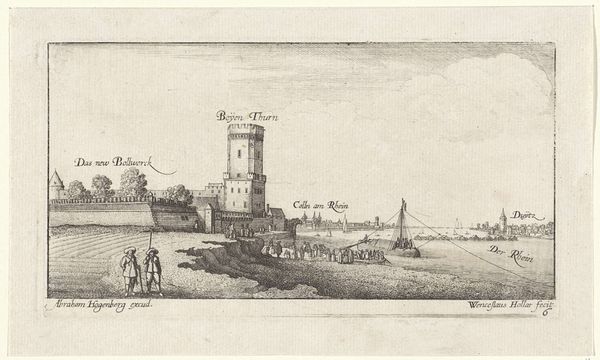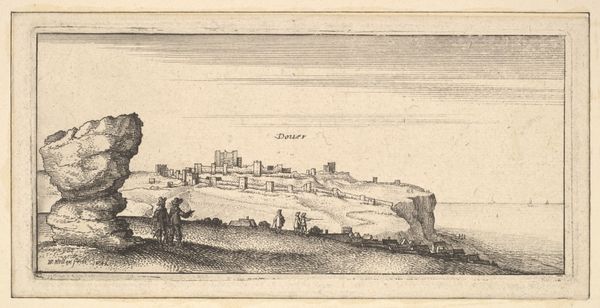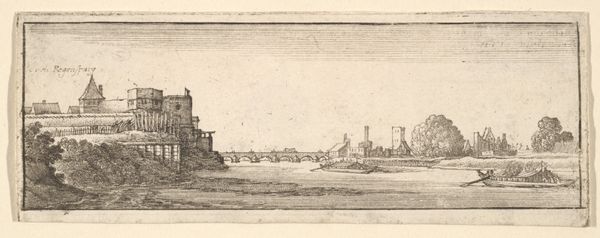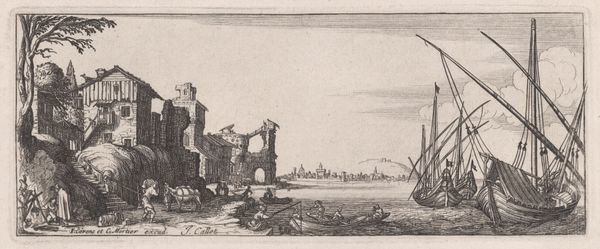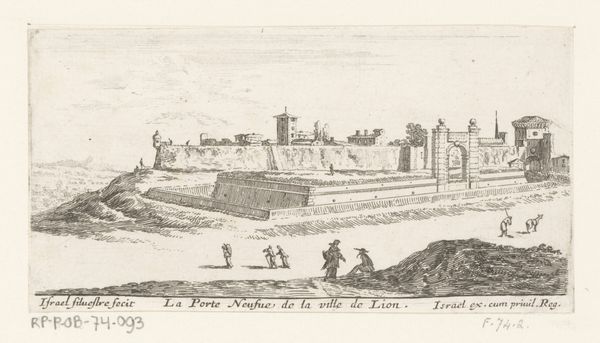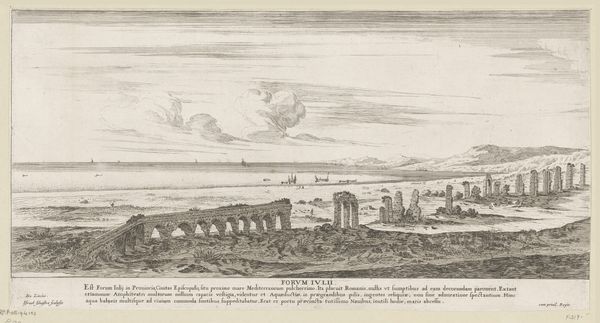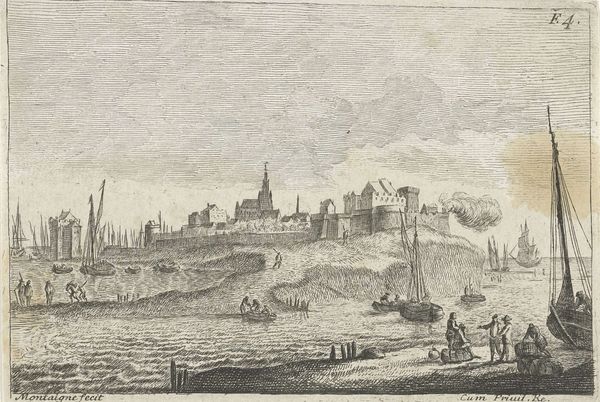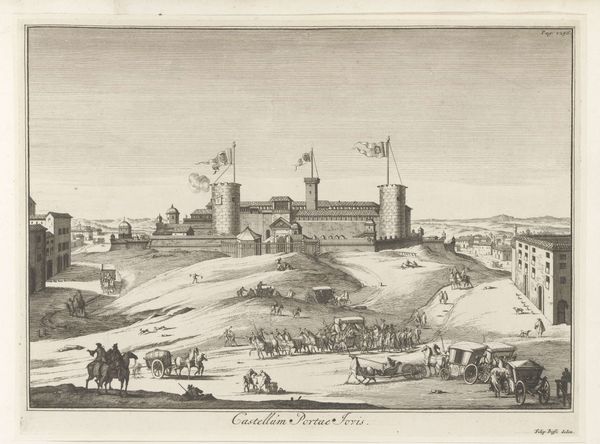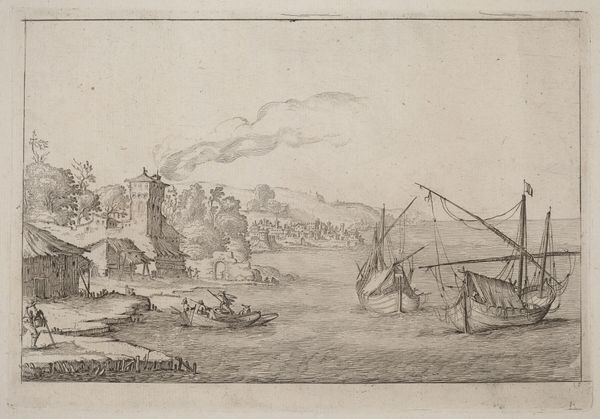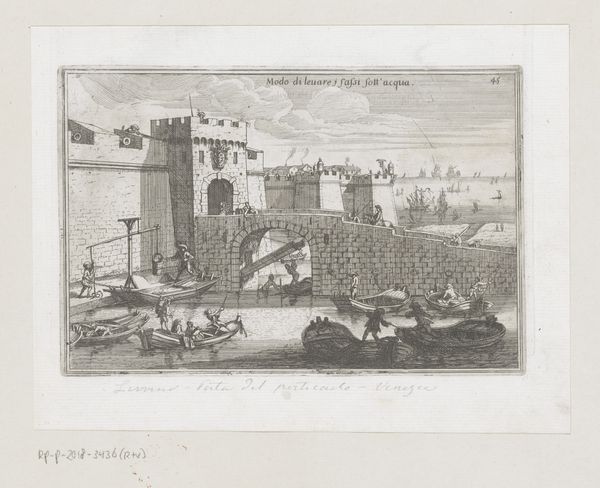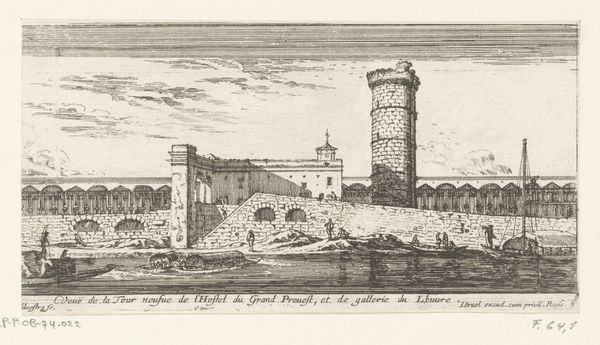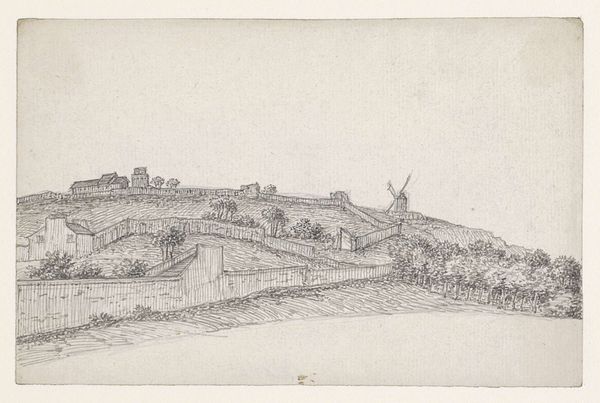
Part of Tangier from above, without the Water-gate 1670
0:00
0:00
drawing, print, etching, engraving
#
drawing
#
ship
# print
#
etching
#
landscape
#
cityscape
#
engraving
Dimensions: Sheet: 4 3/4 × 8 1/2 in. (12.1 × 21.6 cm)
Copyright: Public Domain
Curator: What immediately strikes me about this 1670 etching by Wenceslaus Hollar, titled "Part of Tangier from above, without the Water-gate," is how meticulously he's rendered the fortifications. There's such a stark contrast between the detailed stonework and the relative openness of the sea and sky. It feels both powerful and fragile at once. Editor: Yes, I see it! The contrast you mention creates a curious tension, doesn't it? I am wondering how the act of reproducing or printing is used here as an exploration or observation of a landscape. We've got these tiny figures almost disappearing, dwarfed by architecture. Curator: Absolutely. Hollar's technique involves engraving and etching which are all about labor. Think about the tools used: burins, needles. And then there’s the printing itself—multiple runs, controlling ink, the paper stock itself, that texture. All these industrial, repeatable efforts result in this single, unique artifact. I'm also curious to learn about the social implications here... It offers views into English aspirations of power in this location through this visual technology of engraving and print making. Editor: True, it really brings to the forefront the notion of observation as a labor of perspective. He chose a vantage point that elevates the viewer, almost implying colonial observation and power—but is it an impartial look? Are there politics involved? I see a great exploration of texture in the towers on the left, there is that strange sense of drama or sublime. Curator: What strikes me too, is the inscription: numbers referencing important landmarks like the Watergate or the English Church, this adds such an informative tone. Editor: You are totally right, its clarity is very clinical, the organization very rational, as if it tried to convince an empire what resources this city possesses... It is so cool to see how the combination of those textures, almost accidental results from the medium itself and this dry informational log offer so much nuance on colonial power. Curator: Exactly! Looking at the ships too, makes me think of movement and trade... Hollar is offering this as a commodity as well. How different would his version of the city would be if he decided to omit these elements and show its own, independent character? Editor: The more I ponder it, the more I realize the image asks more questions than it answers! It speaks volumes about its time. Curator: It's a testament to how even seemingly objective records can hold so much implicit meaning!
Comments
No comments
Be the first to comment and join the conversation on the ultimate creative platform.
